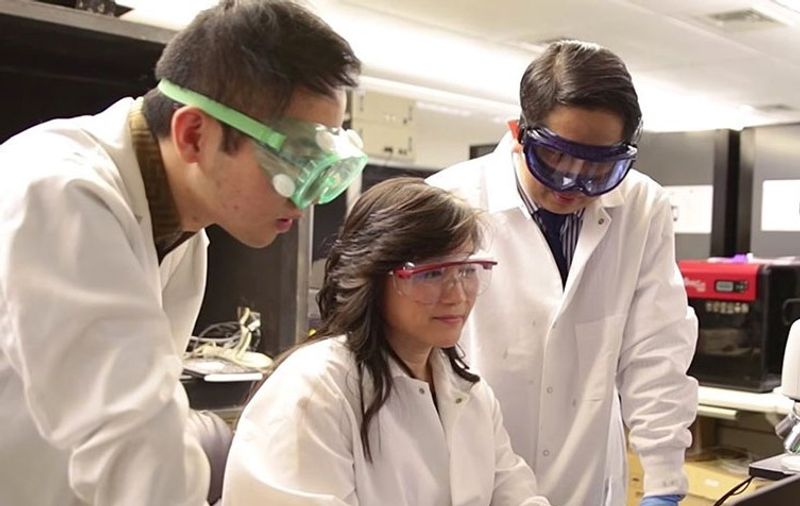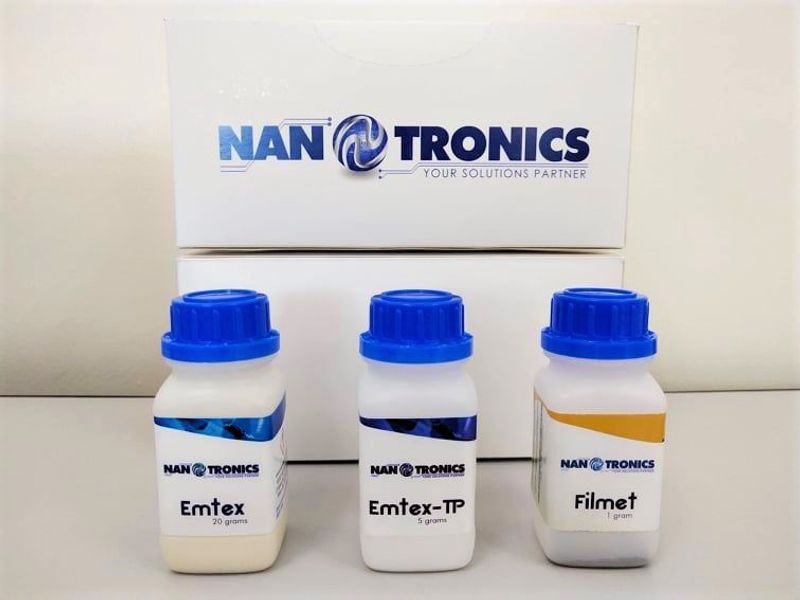Founder Spotlight: The Future of Cleantech and Nanotechnology with Dr. Jerome Palaganas of Nanotronics
Dr. Jerome Palaganas
Founder Spotlight: The Future of Cleantech and Nanotechnology with Dr. Jerome Palaganas of Nanotronics
One of the world’s most pressing issues is environmental sustainability and waste reduction. With the recent technological advancements and the aid of scientific research and development, several solutions to various global issues have been found or are currently being studied. One of which is nanotechnology — manipulation of near-atomic scale matter which can be used to produce new materials, structures, and devices such as vaccines, additives to strengthen materials, and many more.
Nanotronics is a cleantech startup based in the Philippines that pioneers the production of nanotechnology materials in the country. Co-founded by Dr. Jerome Palaganas in 2014, the startup aims to reduce carbon footprint and plastic use through breakthrough sustainable products such as biodegradable packaging using nanotechnology. Let’s learn more about Nanotronics with our interview with the CEO and Co-Founder Dr. Jerome Palaganas.
We’ve seen that you’re really into science and technology. Can you share a bit about yourself?
I am a nanomaterial scientist from Case Western Reserve University where I focus my research and publish my works about nanotechnology materials and additive manufacturing. I have a Ph.D. in Materials Science and Engineering from Mapúa University and a Doctor of Business Administration degree from De La Salle University. What got me into nanotechnology is a rather fortunate event because back then when I was just exploring materials science and engineering. Learning about the field while simultaneously applying it to the industry, it opened an opportunity for me to study nanotechnology in the US and go work in this field here in the Philippines. Also, it opened further opportunities – one of which is to produce nanotechnology materials using local natural resources.
What fascinates me about nanotechnology material is not only as it is a new field of learning, but it has interesting material dynamics and very vast applications that could contribute to various industries.
What makes nanotechnology very interesting and how can it help the future of technology?
Nanotechnology comprises the advanced materials that we are pushing today. These materials are one of the pillars under ‘Industry 4.0’. What makes it very interesting is that nanotechnology can create new materials and properties which are not available with current materials and manufacturing technologies. These new materials and properties allow for newer applications that extend to many different industries. A good example is graphene or graphene oxide - one of the top nanoparticles from the nanotechnology materials group. It is dubbed as the ‘wonder material’ today. It is stronger than steel and far more conductive than copper, it is not metal but rather a polymer. It has many other unique properties to it and has applications to most industries. Given this, it is favored to be one of the key materials for secondary batteries for EV and renewable power storage. It also has antibacterial and antiviral properties, thus finding its application today in the medical industry.
The formulation of our mRNA vaccines from Pfizer and Moderna is also nanotechnology. If not for this technology, I don’t think that we have effective vaccines as we know today to fight against COVID19. Since this is a very new field, we are just looking, starting, or scratching the surface about nanotechnology. We expect to see more breakthrough innovations and industrial applications of these materials in the future.
Can you share with us the inspiration behind Nanotronics?

During the time of the inception of the company in 2014, we dreamt about having our very own product. So, we wished to develop and produce our own product just like any other company. With the different opportunities that came along, Nanotronics today pioneers the production of sustainable nanotechnology materials using highly renewable indigenous plants. We apply nanotechnology learnings that we had from the US and brought it to the Philippines. But of course, the challenge here is how we would localize not only the production and the process but also the materials that we use. With the Philippines having a lot of natural resources, we saw that as an opportunity, and we leverage it. So now, indigenous plants are used as raw materials to make our nanotechnology material products. That’s the story behind Nanotronics.
What are your services and how do you engage your clients? It would be great if you can share with us your products and services to know more about Nanotronics.
The initial products we produced starting 2018 are Emtex and Emtex TP - these are pristine and advanced cellulose nanocrystals and both formulations have specific functions targeted to different material groups. A year later, we produced Filmet, which is pristine graphene oxide. Now that we have these nanomaterials already made in the Philippines, we have made them available for use in the industry, the government, and the universities.

Apart from the products, we also offer research and development services, especially to our clients. We engage them through a pilot. With corporate partners, normally when we offer our nanomaterial products and sometimes there are certain requirements where we need to adjust the products so that they would suit specifically clients’ applications. Our R&D services, it helps clients expedite or hasten the process of adoption in terms of introducing the finished end-product and then commercializing it to the market. Our website is another avenue to contact us where we engage in technical discussions, determining how we can add value to potential clients.
Can you share with us the recent developments in Nanotronics? How did it evolve and what is the impact on the community? Have you been manufacturing or how do you produce your product?
Our most recent product is a derivative of our Emtex. We launched our fully sustainable packaging solution. First and foremost, our vision and mission is to reduce or eliminate the use of petroleum-based plastic and the reduction of plastic waste. We always look at this and do a lot of discussions with stakeholders. The fully sustainable packaging solutions combine the available bio-based product in the market and our nanomaterial so that it would have performance equivalent to plastic but fully bio-based and biodegradable. At the end of the day, we aim to become fully sustainable with our raw materials and our end-products. In terms of impact, we shall see it as soon as we have mass-produced the products in our facility in DLSU Laguna. As of today, we are talking to different stakeholders who are delighted to see the launching of this product as an alternative to plastic packaging. As you are aware, some use the integration of plastics and paper, but our products are better than paper, have performance equivalent to plastic, and most importantly, are fully biodegradable.
Still, on the impact, it has yet to be seen. But pretty much we will be seeing it in the next couple of years and hopefully, we contribute to reducing plastic wastes and reducing carbon emissions starting in the country. Also, our raw materials do not use trees, thus we hope to see and contribute to the reduction in deforestation in the Philippines.
Would you mind sharing with us, at the moment, do you have a manufacturing facility?
Yes, we have a manufacturing facility in Laguna, Philippines. We have a pilot production plant that caters to both the production of our nanomaterial products and for the pilot production of our fully sustainable packaging solutions. In terms of engagement with clients, currently, we are trying to look at the requirement. If the requirement could be less than 10,000 pieces, for instance, we can accommodate it accordingly. But for SMEs, especially for startups, the demand is not that big so we’re trying to aggregate in such a way that we manufacture in a single day or at one time so that the cost will be lowered and offer it competitively to the SMEs and startups. We are also increasing our pilot production capacity to the next step volume. A couple of years ago, we were already anticipating that this would happen so that’s one of the reasons why we have been in startup competitions and been talking to different potential partners for us to raise funding to increase our production capacity.
What's next for Nanotronics in the next few years and beyond?
To date, we just want to share that we already have eight (8) intellectual properties (IPs); we just launched the first version of our fully sustainable packaging solutions intended for FMCGs, and we expect more products will be developed in the next two (2) to five (5) years. It is very hard to say which would come out first in our R&D pipeline right now, but what I can share is that the innovative products that we will be launching, which align with the timing of the market, will be those that are not just innovative but are relevant and solving industry problems. The primary target today is to position Nanotronics in the Philippines, and later penetrate other markets in Asia and the world. Please do watch out for our next-generation products in the coming years.
To learn more about Nanotronics, visit their website here.
Are you a startup, investor or corporation? Or do you just enjoy talking about startups? There are many ways that you can work with TechShake.
We’d love to hear from you!